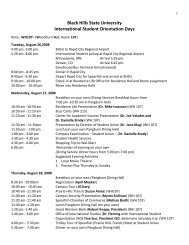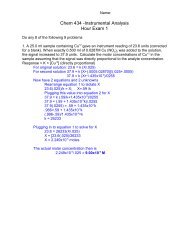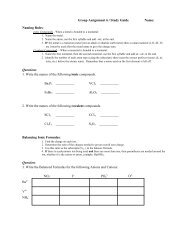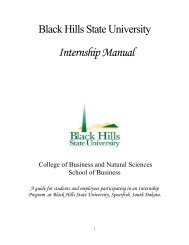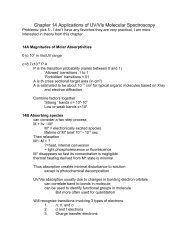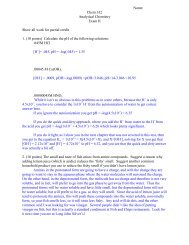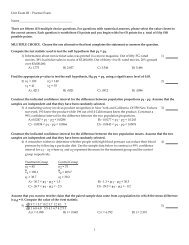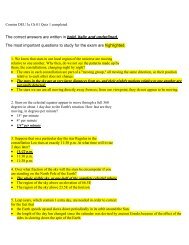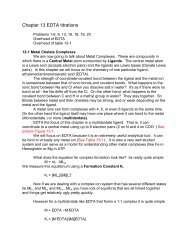The correct answers are written in bold, italic and underlined. The ...
The correct answers are written in bold, italic and underlined. The ...
The correct answers are written in bold, italic and underlined. The ...
Create successful ePaper yourself
Turn your PDF publications into a flip-book with our unique Google optimized e-Paper software.
• Midnight• Noon13. <strong>The</strong> true orbital period of a planet around the Sun, comp<strong>are</strong>d to thebackground stars, is called its• synodic period.• sidereal period.• rotation period.14. A friend from New York City tells you that she saw Venus high <strong>in</strong> thesky at midnight on Christmas Day <strong>in</strong> 2004. Why do you know that she iswrong?• Venus is always too fa<strong>in</strong>t to be seen <strong>in</strong> the w<strong>in</strong>ter from the northern hemisphere.• <strong>The</strong> orbit of Venus is close to the ecliptic, <strong>and</strong> therefore it cannot be seen from the latitude of New York City.• Venus is an <strong>in</strong>ferior planet <strong>and</strong> always sets before midnight because it rema<strong>in</strong>s close to the Sun <strong>in</strong> our sky.15. Suppose that on some particular day the straight l<strong>in</strong>e from the Sunto the Earth cont<strong>in</strong>ues on to pass through Mars <strong>and</strong> ultimately throughsome particular star <strong>in</strong> the sky. (Draw<strong>in</strong>g a diagram might be helpful.)One synodic period later, Mars will aga<strong>in</strong> be l<strong>in</strong>ed up• with the star <strong>and</strong> the Sun, but not with the Earth.• with the Earth <strong>and</strong> the star, but not with the Sun.• with the Earth <strong>and</strong> the Sun, but not with the star.16. <strong>The</strong> synodic period for a planet is different from its siderealperiod because• the Earth (<strong>and</strong> hence the observer) moves.• the planet's speed varies as it moves around the Sun <strong>in</strong> its orbit.• the planet's orbital distance from the Sun is different from that of the Earth from the Sun.17. Tycho Brahe's major contribution to the development of modernastronomy was• the detailed <strong>and</strong> precise measurement of the positions of stars <strong>and</strong> planets <strong>in</strong> our sky.• a detailed <strong>and</strong> successful description of how a star can explode.• the first telescope observations of the variation of app<strong>are</strong>nt shapes <strong>and</strong> sizes of planets, particularly Venus <strong>and</strong>Mercury.18. <strong>The</strong> shape of the Earth's orbit around the Sun is• elliptical, with the Sun at the center of the ellipse.



